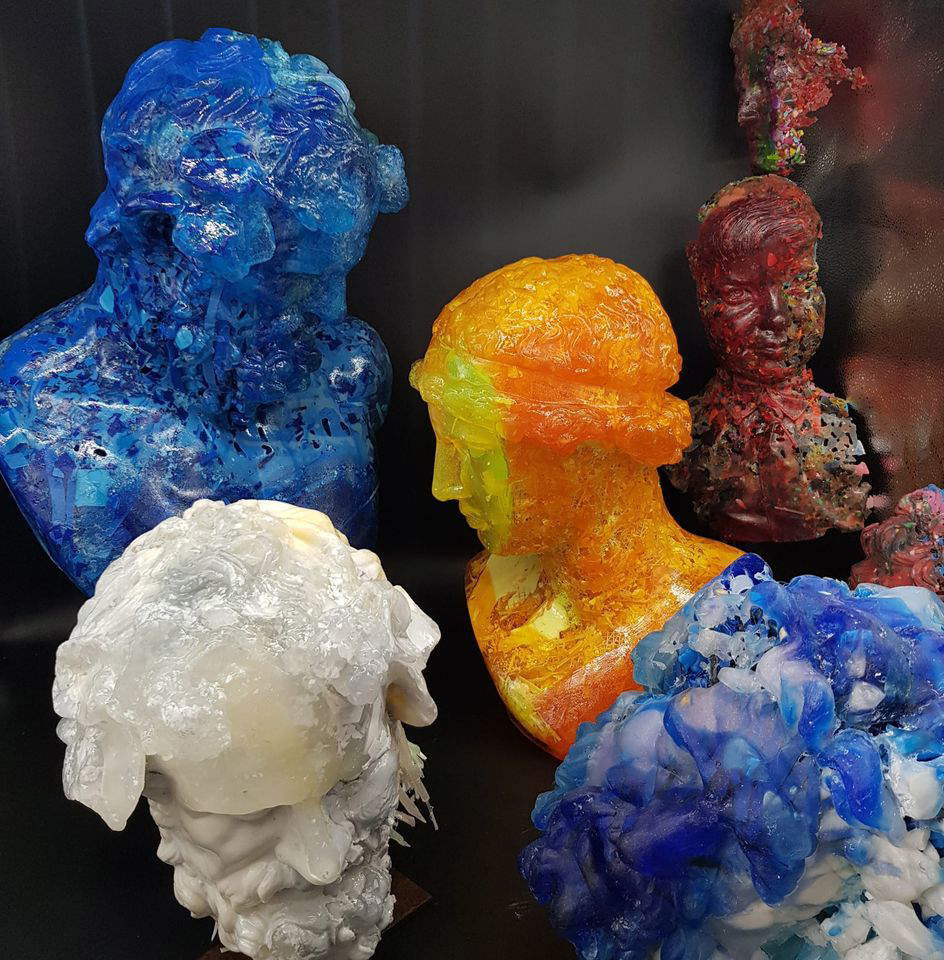by Redazione , published on 30/04/2021
Categories: Contemporary art
/ Disclaimer
Rookie artist Paolo Nicolai creates classically inspired works using discarded plastic materials-the idea is to give new life to waste with works that can last for centuries.
On Instagram, where he has thousands of followers, he introduces himself as a “microplastic designer”: he is Paolo Nicolai, a beginning artist who creates works inspired by classical art with an unusual material for this type of figuration, recycled plastic. The passion for this material was born when Paolo Nicolai, an architecture graduate from the University of Florence with a background as an architect, became interested in the reuse and recycling of pollutants in the environment. Hence, the idea of using abandoned material to give it a new life in the sign of art. The artist’s debut took place in July 2020 in Carrara, his hometown, in an exhibition at Palazzo Binelli: later, Nicolai was a finalist in the Industrial Design category at the Ro Plastic Prize 2020 and again a finalist at the Ecofestival Plastica d’A-MARE in Rome. Today, Nicolai is represented by Il Forte Arte gallery.
For Nicolai, plastic is a kind of “new marble”: plastic, the artist says, is in fact “a metaphor for the new permanence, for the residue that will survive us just as classical marbles survived classicity.” Plastic according to Nicolai is a material that offers endless possibilities of form and color, guaranteeing unpredictable outcomes: thus, his faces, which with their shapes seem (but only in appearance) to resurface from classical antiquity, acquire new values with their lightness, their colors, posing as archaeological fragments of the future. For this reason, the faces of his characters appear as eroded, shattered, frayed, slabbed. Not to mention then that plastic has very long degradation times. The choice of classical forms, on the other hand, lies in the fact that, according to Nicolai, they are eternal forms, capable of surviving tastes and fashions: therefore, not works that return from antiquity, but new works that want to remain.
“When I begin to create my first inspiration,” Nicolai maintains, citing Damien Hirst and Igor Mitoraj as the artists he has looked to most, “is the subject itself, whether it is a deity or an athlete or a priest, then I choose the plastics to use to give it identity and color. Once it’s finished I imagine it as a find of a posthumous archaeology so I have to transform it again, wear it down, wear it out, give it the signs of the slowness of the passage of time.” What Nicolai proposes is therefore not a return to the past, nor does the artist look with a nostalgic attitude at times gone by: his is meant to be an art that lives in the present by using contemporary materials, just as the ancients used the materials that were most congenial to them. His sculptures, monochrome or polychrome, also refer to the structure of digital images: digital art, with its works made of agglomerates of pixels, is another reference of the artist from Carrara.
His process blends knowledge of art history (Greek, Roman and neoclassical) with a creativity based on an artisanal approach to the material: it is Nicolai himself who takes care of all the stages in the birth of a work. “For me, there is no production waste but only new creative opportunities,” says Nicolai. To create his works, the artist collects discarded plastic, which is then mixed with epodissic resin so it can be molded. The “waste material” is thus “ennobled” becoming a work of art that, in the artist’s intentions, is meant to last for centuries.
 |
| Works by Paolo Nicolai |
 |
| Works by Paolo Nicolai |
 |
| Works by Paolo Nicolai |
 |
| Works by Paolo Nicolai |
 |
| Works by Paolo Nicolai |
 |
| Works by Paolo Nicolai |
 |
| Paolo Nicolai, the artist who found in plastic the "new marble" |
Warning: the translation into English of the original Italian article was created using automatic tools.
We undertake to review all articles, but we do not guarantee the total absence of inaccuracies in the translation due to the program. You can
find the original by clicking on the ITA button. If you find any mistake,please contact us.




































